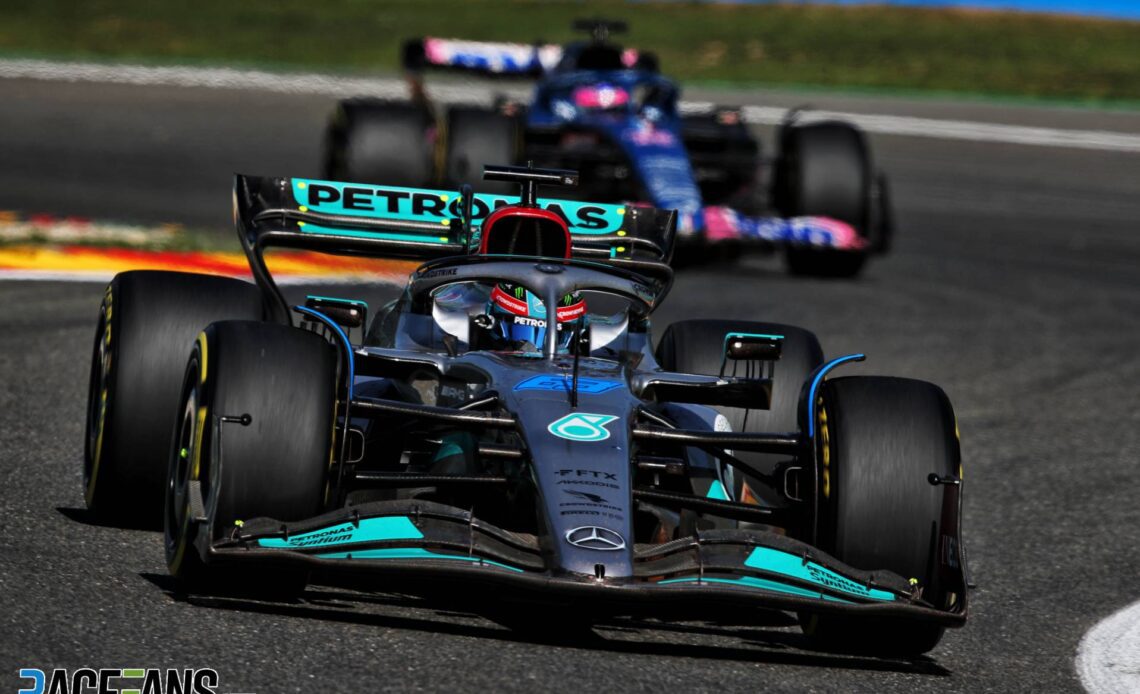Mercedes say cutting their straight-line speed deficit to Red Bull will be one of their goals with next year’s car design, but expect it will continue to compromise their performance in the meantime.
Following the Dutch Grand Prix, in which Mercedes drivers George Russell and Lewis Hamilton finished second and fourth, team principal Toto Wolff admitted the team’s straight-line performance was a handicap even on tracks where top speed is not a priority.
“I don’t think that, on a par with the same tyre, we could have overtaken the Red Bull with the straight line speed,” he said, pointing out that Hamilton spent the opening laps of the race stuck behind one of the Ferraris. “You’ve seen that with Carlos Sainz. We had less pace, we weren’t really able to pass him at the beginning.”
Matching Red Bull’s straight-line speed will “definitely” be a priority for Mercedes’ 2023 car design, said Wolff. “We’re thinking about removing the rear wing overall to be less vulnerable on the straight,” he joked.
“We have a band or [section] of a car with too much drag, and downforce where we really don’t need it,” he explained. “So that’s something which we can change quickly. That’s for next year. And we’re learning the hard way at the moment.
“I believe that on some tracks, especially in qualifying, that will bite us. The races looks better, like you’ve seen also in Spa, that there wasn’t such a big differential on the straights.”
Mercedes were particularly uncompetitive at Spa-Francorchamps, a track which, like Monza, has several long straights. However trackside engineering director Andrew Shovlin said this was partly due to the ride height the team ran at that circuit.
“In Spa we definitely struggled particularly on a single lap and we’ve identified some areas in terms of where we have taken the car to in its development that make it difficult to run it in its optimum condition at those tracks,” he said in a video released by the team.
“In Spa we had to lift the car a bit, we were struggling with it on some of the bumps and the net effect was that it was costing us performance. We then decided to run a bigger wing than we would have ideally done to try and put the downforce back on the car and the net result is that we were okay in the corners, but we were slow on the straights and that was costing us.
“Now, at Zandvoort the car was easier to get into the right window. It was riding well, it wasn’t bouncing over…
Click Here to Read the Full Original Article at RaceFans…

